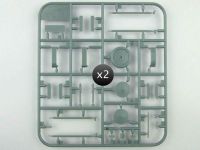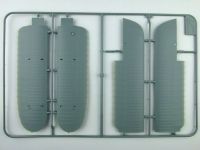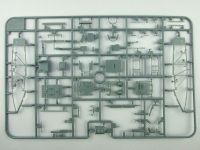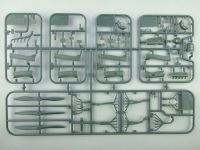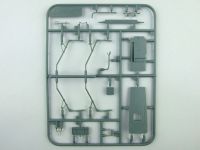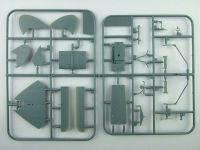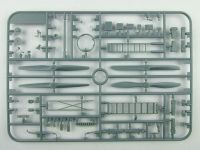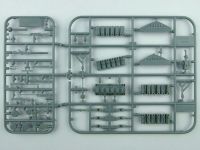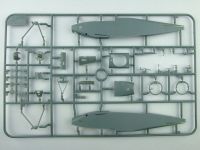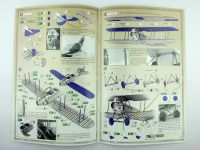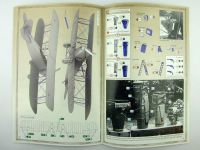Wingnut Wings | #32040: 1/32 DFW C.V Mid Production
Reviewed by Kevin Futter
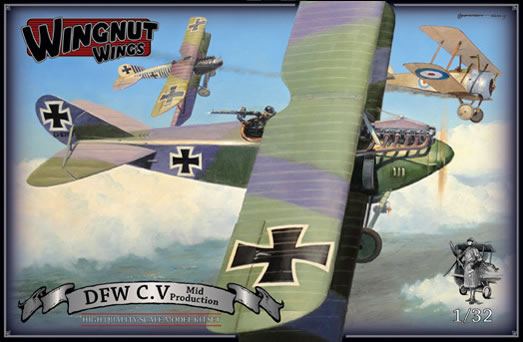
New Zealand firm Wingnut Wings continues its prolific output by releasing a pair of DFW C.V kits - a mid production variant and a late production variant. By my reckoning that's at least six kit releases for 2014 so far! In this review we examine kit #32040, the DFW C.V Mid Production variant.
The kit ships in the standard sturdy box, adorned with the usual stunning box art. Such is the standard that Wingnut Wings sets in all areas of its kit production, that these fantastic elements seem merely commonplace and expected these days. We are truly spoiled! Inside the box, we find the following components:
- 10 grey plastic sprues
- 1 clear plastic sprue
- 1 photo-etched fret
- 1 large decal sheet
- 1 instruction booklet
Plastic Sprues
Note that sprue "L" is actually marked as being for the late production variant, and most of the parts contained on it are not required for this version.
The plastic parts are flawless, without any signs of flash or moulding imperfections. Ejector pin marks have been kept to a minimum, and are generally in places unlikely to visible on the finished model. Detail is exceptional:
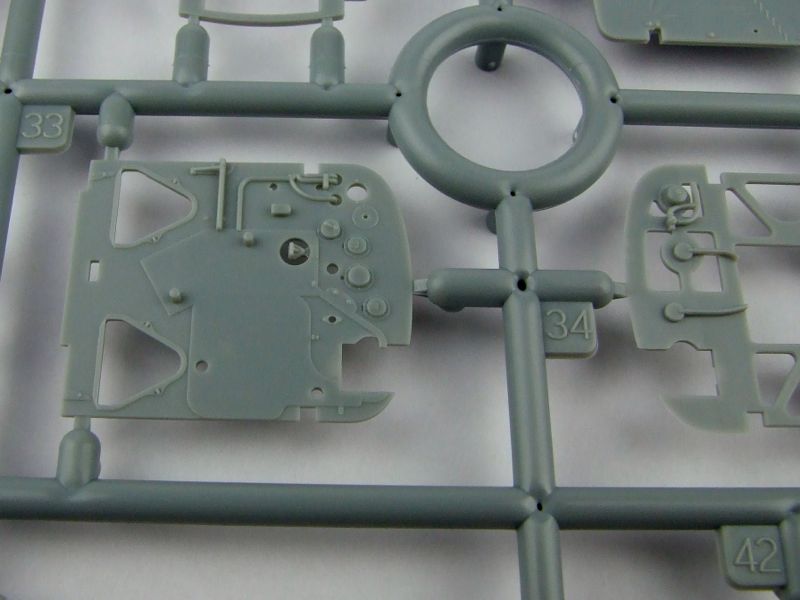
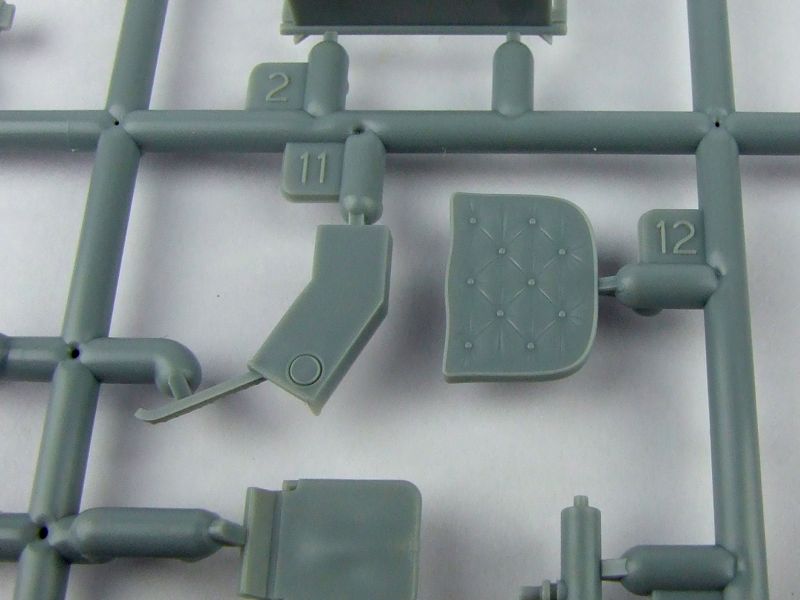
The supplied clear sprue is quite simple, as you'd imagine given the era, but the parts are very nicely moulded and crystal clear.
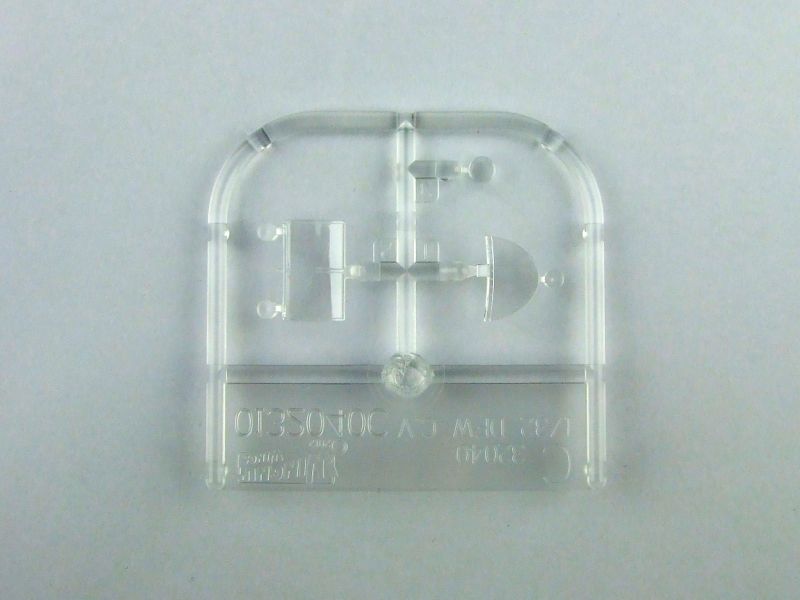
Photo-etched Fret
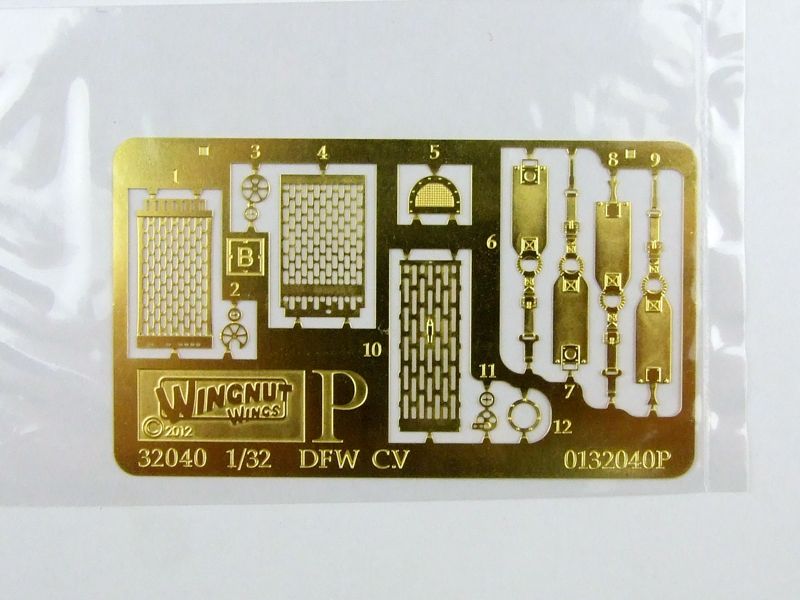
The photo-etched fret supplies mainly seat belts for the cockpit, and cooling a jacket for the machine gun. The use of the latter is not obligatory, as an alternative machine gun with the jacket moulded-in is supplied on the plastic sprues. Using the photo-etched jacket will produce a far superior result however, and a tool is supplied (part G18) to assist with rolling it into the required cylindrical shape.
Instruction Booklet
The instruction booklets supplied in Wingnut Wings kits have become legendary, and with good reason. The production values are equivalent to a glossy magazine, and to refer to them as mere instruction booklets does them a grave disservice.
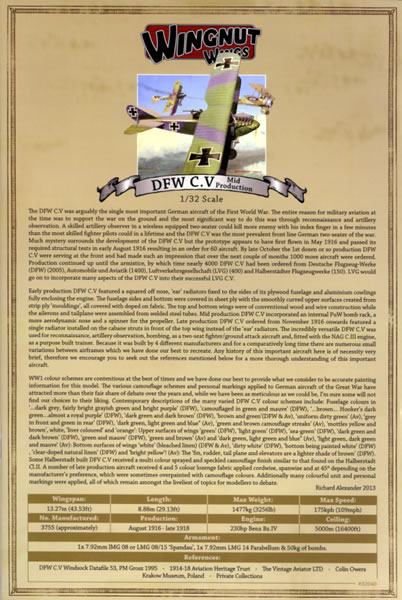
The cover features a potted history of the type, and a specifications table at the bottom. This material is also available on the Wingnut Wings webpage for the kit.
The content features colourful and highly-detailed annotated assembly drawings, complemented by captioned reference photographs and painting instructions.
Decals and Markings
This kit features a single decal sheet, and while large and comprehensive, represents the smallest decal package I've yet seen in a Wingnut Wings kit. This mostly due to none of the supplied schemes featuring a lozenge pattern. The decals themselves are printed by Cartograf, and are exquisite:
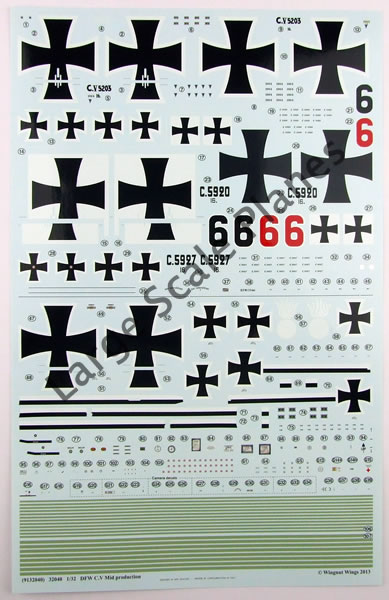
There's an extensive paint chart on the inside cover of the instruction booklet, with paint colours listed from the Tamiya and Humbrol ranges. The painting and decalling guide begins on page 21, and features the following five aircraft:
- DFW C.V (LVG) 5203/16, Habsheim, April to May 1917
- DFW C.V (Av) 5920/16 "Red 6", Kurt Wesser?, FA (A) 275?, September 1917
- DFW C.V (Av) 5927/16, Hans Huppertz & Friedrich Neumüller, FA 18, April 1917
- DFW C.V "Grenade", FA 48b, 1917 to early 1918
- DFW C.V "Stripes", FA (A) 282?, 1917 to early 1918
Check out the Wingnut Wings website for colour profiles of these schemes.
Conclusion
This release represents everything we've come to expect from a Wingnut Wings kit: exceptional moulding quality, excellent detail, superb decals and industry-leading documentation. What more could you ask for? Highly recommended.
Review sample supplied by Wingnut Wings.
© Kevin Futter 2014
This review was published on Friday, August 08 2014; Last modified on Saturday, October 03 2015

